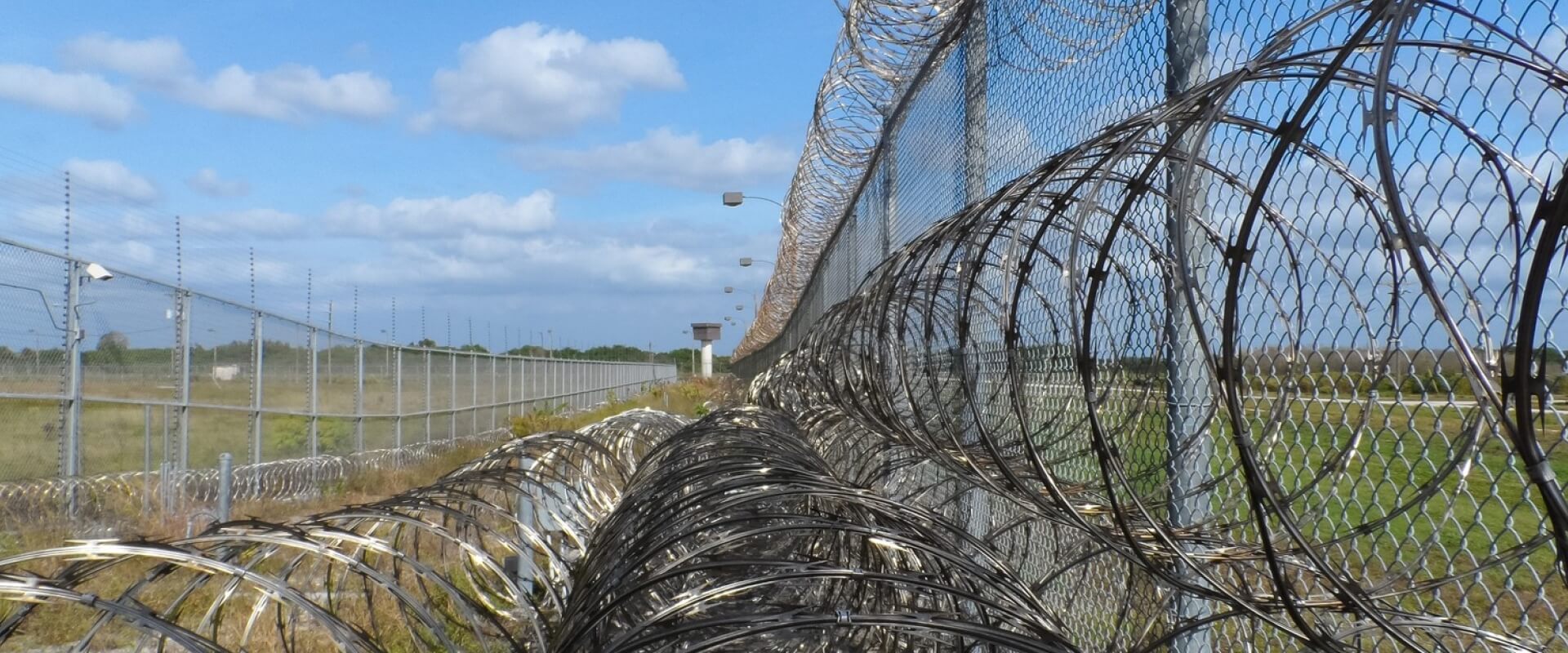State and Private Violence
A Case of Battered Justice: Theresa Cruz fighting Domestic Violence and State Violence
by Diana Block

activism court-advocacy domestic-violence
Theresa Cruz is a Chicana woman from San Diego who is serving a seven to life sentence for conspiracy to commit murder against a man who abused and stalked her for over five years. When her abuser threatened to take their child away from Theresa, she confided in a male friend. The friend then confronted her abuser and shot him five times in the legs. Although her abuser sustained no permanent injuries, Theresa was convicted on a first degree murder charge. Since her conviction, Theresa’s mother, three daughters and son have become tireless fighters for her freedom, filing numerous court appeals, advocating with the state legislature, speaking on T.V. shows and to college classes about her case and sparking massive public support for her release. Despite all of these efforts, Theresa remains in prison like hundreds of other battered women whose acts of self-defense crossed the boundaries of legality as defined by the state.
Theresa’s story is a striking example of the judicial system’s continuing destructive bias which puts the burden of punishment on battered women instead of on their abusers. After suffering years of abuse at the hand of an individual, they suddenly become the “criminals” and are subsequently punished, often for the rest of their lives. Since 1997, the California Coalition for Women Prisoners (CCWP) has been working to free Theresa Cruz and other battered women in prison, exposing the critical intersection between domestic and state violence in women’s lives and developing strategies in conjunction with prisoners and their family members to release the women caught in this sinister trap. The prejudicial treatment of survivors at the hands of the criminal justice system makes it clear that domestic violence is not just an issue of individual male violence but is buttressed and reinforced on many levels by the society’s institutions of social control: namely the laws, the courts, the prisons, the parole board, and the government. Theresa’s case is not an exception and so it offers a window on the concrete methods by which these institutions perpetuate violence, particularly targeting women of color and those without money. Her case also shows how the direct experience of injustice can propel a woman and her family into activism and how they can then become the force behind a public campaign which challenges the entire system.
Describing the background of her case, Theresa writes:
Domestic violence first came into my life like an undetected disease. It started out slowly. The objective was control over the body and the mind. The end result was total control of one individual by another. Living in a domestic violence situation is one of the most painful situations one could live in. He beat and stalked me. I moved five times in three years. His final threat was to take my child. For five straight years I sustained a lot of abuse, but this final threat pushed me over the edge. I had never been separated from my children and I cannot even begin to describe the feeling and fear I felt. In reality, it was a syndrome that built and built and then exploded. When it came to my children, I lost control of my mind and let my emotions take control. How long will society continue to ignore the incarceration of individuals that made decisions under duress as a result of domestic violence? Don’t misunderstand me. I accept ownership for my participation in a dysfunctional relationship, but like community property, I am only entitled to half.
Four days after the shooting, Theresa was arrested and accused of assault, but this relatively minor charge was later increased to a charge of conspiracy to commit murder. During her trial, her attorney failed to use all available legal avenues to introduce the history of domestic violence into the trial, and the efforts he did make were refused by the judge who ruled all of the history irrelevant and stated that “even if relevant the history would be unduly time consuming, confusing and misleading to the jury”. Although this was a first offense and Theresa was told by her lawyer that she most probably would get probation, she received a sentence of 25 years to life in prison (which was later reduced to seven years to life on appeal). At the same time her abuser, deemed the victim by the courts, received custody of their son.
Theresa was initially devastated by her conviction. What happened in the courtroom was so far from her sense of the rights and wrongs of the situation that she was disoriented and in shock. Theresa’s mother, Theresa Azhocar, had sat through the trial in confusion, wondering at many points which side the lawyer was really on as he failed to obtain copies of the transcript of the trial of the man who actually did the shooting, allowed the mother of a prosecuting attorney working in the same office as Theresa’s prosecutor to sit on the jury, and finally advised Theresa against taking a deal where her maximum sentence would have been ten years. After the trial was over, after she watched her daughter’s abuser win custody of her grandson over her angry protests, Theresa Azhocar fully supported her daughter’s desire to fight this conviction. Together they found another lawyer and began the difficult, time and money consuming process of filing a habeas petition for a new trial.
Over the next seven years both Theresas tried to keep their spirits up as one judge after another rejected the appeal, conceding that mistakes had been made in the trial but insisting that they were “harmless errors”. The low point came when one federal judge, not content with simply denying the appeal wrote a derisive poem which he included in his official ruling: -“Petitioner said ‘I didn’t do it!’/The jury found she really blew it./So she blamed her lawyer for misfeasance/Not withstanding his achievements…” This verbal battery was more than either Theresa could comprehend. “I couldn’t believe that a judge could be so insulting, so demeaning and still keep his job, but then I began to see that attitudes like that were part of why he had that position” Theresa Azhocar complained.
In the face of this abusive treatment by the court system, Theresa and her mother mounted a national campaign to raise public awareness about the case. Theresa’s case was featured in Latina magazine, on the Spanish language TV show Telemundo, and her children appeared on the Sally Jessie Raphael TV show. The case also won the support of the San Diego Labor Council, labor unions around California and a broad range of women’s and community groups.
Then the impossible seemed to happen. In April 1998 another federal judge, Napoleon Jones, reviewed the case and in a detailed opinion overturned Theresa’s conviction on the basis of the incompetence of her legal counsel. Theresa and her family were overjoyed and felt vindicated that the obvious problems with their attorney had finally been recognized by a judge. However, the state of California immediately appealed this ruling to the federal ninth district court - a punitive step which they didn’t have to take especially given the fact that Theresa had already served seven years of her seven to life sentence.
While the state’s appeal was pending, Judge Jones granted Theresa $200,000 bail. Theresa was released on July 9 and for a little over two weeks she was able to be together with her children in their home. While she was free, Theresa spent every minute with her children, helping Andrea and Antoinette find jobs, visiting Adriana’s school and even spending time with her son, Carlitos, who was still living with her abuser. But the state appealed the bail, calling Theresa a danger to the “victim”, and the state won. 18 days after she was released, Theresa was forced back to prison, devastating her family. Her eight year old daughter Adriana wrote to the governor “Dear governor, I wish I was a bird so I could fly to her prison and put my mommy on my wings and bring her home. Please help my mommy come home to us.” Her eighteen year old daughter Andrea stopped talking for months. And Theresa sat in her cell, unable to believe that her yearned for freedom had been taken away so abruptly and decisively. Back in her cell, Theresa wrote “It’s so hard to believe that one moment I can touch, feel and love my children and the next minute it is all taken away so fast for no reason. When I sit in my cell I wonder was I ever really out, and the heartache of my children is here with me.” In January 1999 the ninth district court overruled Judge Jones’ decision and upheld Theresa’s conviction, essentially eliminating all hope of winning her release through the appeals process.
Theresa’s case was closely followed by other battered women prisoners and they were overjoyed when her conviction was overturned and she was let out on bail. Another prisoner, Charisse Shumate wrote “I and every other woman that knew or heard about her freedom was so happy for her. It also gave us as lifers a dim light at the end of the tunnel to know that there is still hope. Then to hear that after 18 days of being a mother, sleeping, eating with your children, thanking God that the living nightmare of prison walls is over, she was to be rearrested and taken back, snatched away from your children, as if it hadn’t happened! Has any member of the Bureau of Prison Terms or Governor Pete Wilson thought about what this has done to the minds of those children?”
Since 1999, Theresa’s fight for release has focused on the parole process which has been the primary avenue available to her and many other battered women prisoners with indeterminate life sentences once their appeals have been exhausted. But in the state of California, as in most other states, parole has become an illusory dream for the overwhelming majority of prisoners with indeterminate life sentences. In 1995, the testimony of Theresa’s family played a key role in the passage of a bill, which directed the Parole Board to take into account a history of domestic violence when evaluating prisoners for parole. Law 4801 went into effect in January 1996 and was intended to support the release of those battered women who, like Theresa, had been convicted prior to 1992. In that year significant new laws were passed which supported the use of expert testimony on domestic violence and the introduction of evidence of previous abuse during trial, but women who were convicted prior to their passage were not, at that time, able to have their sentences reversed.
However, since the passage of 4801, Theresa has had four parole hearings and four parole denials. Each hearing is a traumatic and emotional event for prisoners not only because their future lies in the Board’s hands but because of the sharp interrogation which the Board puts each person through and the expectation that they must take responsibility for their “crimes” and show remorse. In the cases of battered women who have defended themselves, this amounts to accepting a guilt which current laws actually contradict. Yet most battered women prisoners go through this process, believing that they must tell the Board what it wants to hear if there is to be any hope for release. Despite all their efforts, in most cases the Board’s decision is predetermined and negative.
Each year Theresa’s abuser comes to her parole hearings and testifies that Theresa is still a danger to society and he would fear for his life if she should be released. The Parole Board ignores her exemplary record in prison, the letters from prison staff and psychologists, her positive role as a peer drug counselor and the fact that she more than meets the minimum guidelines for release and rejects her for parole. In a letter to the Parole Board, Theresa’s children wrote ” Our mother is not a career criminal, she is an abused and battered woman who was pushed to the edge. Our mother’s abuser went to her parole hearing to say that if our mother was paroled, his life would be in danger. For years this man abused our mother and now he is the so-called “victim” and has the right to say when our mother should be free.”
The fact that Theresa’s son was removed from his father’s home when he was sixteen because of abuse did not have any impact on the Parole Board either. Before one of her hearings her son described his history of physical and mental abuse in an impassioned statement to the Parole Board. “My father beat me many times for years, he wouldn’t follow the court order, and he wouldn’t allow me to see my grandma for visitation because I had bruises. He would wait till the bruises went away and other times he just didn’t feel like letting me go… He would tell me if I told anyone he wouldn’t let my mother out of prison. He would also tell me if I was a good little boy he would let my mother out of prison. I did everything to be good because I was just a little boy and I believed him.”
The Parole Board ignored this stark evidence and instead listened to her abuser who claimed that Theresa had poisoned their son’s mind against him. In their rote rulings, the Parole Board advises Theresa that she has not yet taken sufficient responsibility for her actions and must delve deeper into her own motivations for the crime. At a recent hearing they also chastised her for “blaming” domestic violence as the cause of her behavior.
Theresa has suffered because of the narrow definition used by the Parole Board in determining which women qualify for the label of “Battered Women’s Syndrome” (BWS). Because Theresa was separated from her abuser at the time of the offense and the provocation for her action was the threat to take away their child rather than a physical attack, the Parole Board has decided that domestic violence was not the cause of her offense. They accuse Theresa of using the issue of domestic violence to win sympathy and excuse her offense and her “deceptiveness” becomes yet another grounds for denying her parole. The Board has also repeatedly accused her of manipulating the public, making negative reference to the letters of support they have received and the fact that material about her case is available on the web. It seems likely that her parole denials are also a form of retaliation against the campaign, which her case has inspired.
In response to such problems, advocates and lawyers have protested that the limited definition of BWS which is commonly used eliminates from judicial and parole consideration all women who don’t act in spontaneous self-defense to a clear physical threat. Advocates have also challenged the terminology “Battered Women’s Syndrome” since it identifies the response to abuse as pathological and perpetuates a misconception of battered women as suffering victims rather than as active survivors. Legislation is being proposed, which would change this terminology and would also expand legal redress for women who committed crimes because they were coerced by their batterers or where the victim was not the woman’s batterer, but where the history of battering was still relevant to the woman’s defense claim.
Theresa’s next step, given the stalemate with the Parole Board, is to appeal to the courts about her parole rejections. California courts have been sympathetic to the contestations of other prisoners that the Parole Board is acting illegally in denying release to 99% of eligible prisoners. While no one has yet gotten out as a result of court orders, this strategy has succeeded in raising an important judicial challenge to the Parole Board and has also forced the issue of parole denials into the public eye.
Although Theresa’s release has not been won, the work to free her has contributed to the movement to free all battered women prisoners in California. Since 2001, the group Free Battered Women (formerly known as the California Coalition for Battered Women in Prison and now a project of CCWP) has mobilized a wide variety of groups and individuals across California in the effort to free battered women prisoners. Over the past years, the public discourse has been transformed through dozens of sympathetic newspaper articles and editorials, network T.V. programs, community cultural events and educational forums which all expose how justice has been abused in the cases of incarcerated survivors.
Not only has unprecedented public attention been focused on the issue of incarcerated survivors, Free Battered Women has helped to win parole dates for over a dozen women and has helped win the release of prisoners through new legal strategies. The group has prioritized active collaboration with the women inside, working with a steering committee of women prisoners to build a mass campaign which involves family members, former prisoners, lawyers, law students, activists and nuns which call upon the Parole Board and the Governor to release battered women.
The work for battered women prisoners has also presented a challenge to strategies within the anti-violence movement which rely on assistance from the police, the courts and the prison system as the primary method of addressing domestic violence. In her keynote address to the Color of Violence conference held in April 2000, Angela Davis asked over 1,500 participants concerned with this issue ” Can a state that is thoroughly infused with racism, male dominance, class-bias, and homophobia and that constructs itself in and through violence act to minimize violence in the lives of women?” (Colorlines, fall 2000, p.6) Later in the same speech Davis pointed out that the 1994 Federal Violence Against Women Act was passed by Congress as part of the Violent Crime Control and Law Enforcement Act. Ironically, the act received active support from sectors of the anti-violence movement, even while it contained provisions which facilitated the incarceration of more women.
The organization INCITE! Women of Color Against Violence was an outgrowth of the conference. In a statement written with the prison abolitionist group Critical Resistance (and signed by CCWP), INCITE speaks to the contradictions within the anti- prison and anti-violence movements and calls upon both to develop strategies and analysis that “address both state AND interpersonal violence, particularly violence against women”. The statement also notes that “Battered women prisoners represent an intersection of state and interpersonal violence and as such provide an opportunity for both movements to build coalitions and joint struggles”.
Theresa Cruz’s case demonstrates the potential for developing joint, grassroots struggles based in the concrete experiences of abused women and their family members. It was their first hand experience of the blatant prejudices of the judicial process which propelled Theresa, her mother, her daughters, and finally her entire extended family into taking action. Theresa Azhocar explains that she never was interested in “politics” before her daughter’s case, but left that area to her husband (who died shortly after Theresa’s conviction). Her shock at the treatment that Theresa received in the courts transformed her awareness. The family’s decision to speak out and take action initiated a campaign, which gave a personal, visible face to the relationship between domestic and state violence. Theresa Azhocar has become an impassioned spokeswoman on behalf of all the incarcerated survivors and has also motivated other family members to become involved in the struggle to free their loved ones.
There is no simple answer for the multiple contradictions of violence against women that are embedded in this society’s social fabric and structure. But women like Theresa Cruz inspire work which crosses both sides of the walls and points a direction for challenging both domestic violence and the prison industrial complex as a whole.



